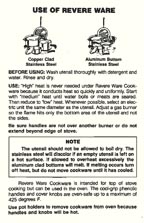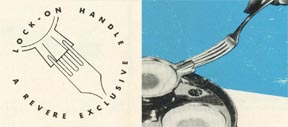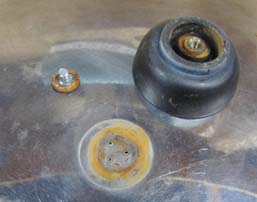We try to test our parts as well as we can to make sure they work well and are durable. For instance, we recently tested our handles along with original Revere Ware ones with exposure to direct and indirect flame, so see how they compared. The bad news is that with either of the handles, when the flame from a gas stove is in direct contact with it or comes close to it, the Bakelite will start to bubble and give off an acrid odor. The good news is that our handles performed the same as the originals. We recommend that you insure the gas flame doesn’t get too close to the handles. Incidentally, we don’t recommend putting Bakelite in the oven, because above a critical temperature, it will melt. We haven’t tried determining that temperature just yet and there is no reference to it in the vintage Revere Ware materials we have.
The latest testing we have been doing is testing our Bakelite handles for dishwasher endurance. After 5 months of continuous daily washing, they don’t look horrible, but they are noticeably less shiny than they originally were. We have also noticed that with older handles, ones that show slight dulling on the Bakelite already, washing in a dishwasher tends to make them look dull and dry after only a hand full of washings. We suspect it is the detergent that is causing the dulling on the Bakelite but it could also be the heat of the wash water or the drying cycle.
The best idea is to keep anything with Bakelite out of your dishwasher, especially items you can’t get replacement Bakelite for. Wash them by hand with a mild detergent.




